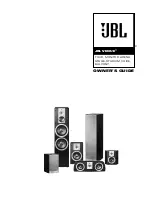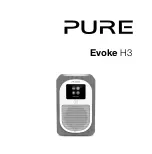
Copyright © 2008 by Wavecor Ltd., GuangZhou, China. All rights reserved.
Wavecor ® is a registered trademark of Wavecor Ltd.
USER MANUAL
Page 4
Evaluation Kit 5
Getting the best out of your Wavecor Kit
Wavecor Evaluation Kits are designed to be 00% true to the input signal without any coloration or distortion:
What goes in also comes out.
The kits are intended to give the most accurate picture of what Wavecor speakers are all about: Details, dynamics,
low distortion: Full of life, atmosphere, and reality.
Wavecor speaker kits will work with any audio system but the true qualities are only exposed if connected to a
real high-end audio system.
Evaluation Kit 5 is a 4 ohm speaker but not a very difficult load for the amplifier. It can handle significant amounts
of power but will also shine with relative small power amplifiers of high quality.
Evaluation Kit 5 is prepared for bi-wiring, which we recommend.
For critical listening we recommend leaving off the front grille. The front grille is designed for minimal influence
on the sound and with as open grille cloth as possible. However, the front grille and the cloth do attenuate the
treble level around dB at 20kHz and the grille does cause limited midrange reflections.
Please read below about positioning of the speakers as this is an important part of obtaining the best possible
sound.
Setting up
Height over the floor
The Wavecor Evaluation Kit 5 is designed to be positioned on stable, good quality speaker stands that ensure a
correct height for optimal listening. The correct height is obtained when the tweeter is roughly at same height
over the floor as the listener’s ears.
Distance to rear wall
The Evaluation Kit 5 features a rear firing port to minimize the audible effect of any port resonances or midrange
sound waves from inside the cabinet.
In order for the rear port to function properly it is recommended that the speaker be placed at least 0cm ( ft.)
from the rear wall. See also fig. below.
The speaker may be moved further away from the rear wall depending on the specific room and on the listener’s
preferences. Generally, the bass will vary with the distance to the wall in a way so the bass level is reduced when
the speaker is moved further away from the wall.
Distance to side walls
The side walls will reflect the sound at certain frequencies and may in some cases reduce the accuracy of the stereo
image of the speakers. It is recommended to keep some distance (“D” in fig. ) to the side walls and experiment
until the best speaker position is found.
Like the rear wall, approaching the speakers to the side walls may also increase the bass level.
Distance to room corners
Placing the speakers close to the corners of the room will boost the bass - in some cases considerably.
Again, it is recommended to experiment with different distances and positions as this may change the low
frequency response of the speaker. Do not stop until you have exactly the bass response that you prefer.


























